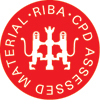Correct design of a building's façade has a key role to play in its environmental performance: in terms of energy use, carbon emissions and thermal comfort of the occupants. Good façades deliver performance-driven design and sustainable construction. All too often, designers suspect that improving the U-value performance of a glazing system is the key mechanism for improving a building's overall internal thermal comfort but is it?
This programme will look at the general processes of façade design, issues to consider when designing as well as some glazing types.
Key learning:
- Cost and value of façades
- Aspects of façade modelling including thermal breaks
- Orientation, solar, light and thermal performance of building envelopes
- Changing environmental characteristics of the building envelope
- The use of U-value calculations
- New technological approaches
About the contributors
Andrew Hall, Leader, Global Façade Engineering at Arup. He has extensive experience in design, procurement, testing and construction of cladding using a wide range of systems, materials and construction types for both new build and refurbishment projects. Andrew leads a wide-ranging multi-disciplinary team of structural/mechanical engineers, architects, material scientists, engineering geologists, ex-industry specialists and product designers.
 Disclaimer: NBS TV programmes are the intellectual property of RIBA Enterprises and it shall be a breach of this right to copy, or in any way exploit commercially or show in public any of the programmes without the express permission of RIBA Enterprises.
Disclaimer: NBS TV programmes are the intellectual property of RIBA Enterprises and it shall be a breach of this right to copy, or in any way exploit commercially or show in public any of the programmes without the express permission of RIBA Enterprises.
